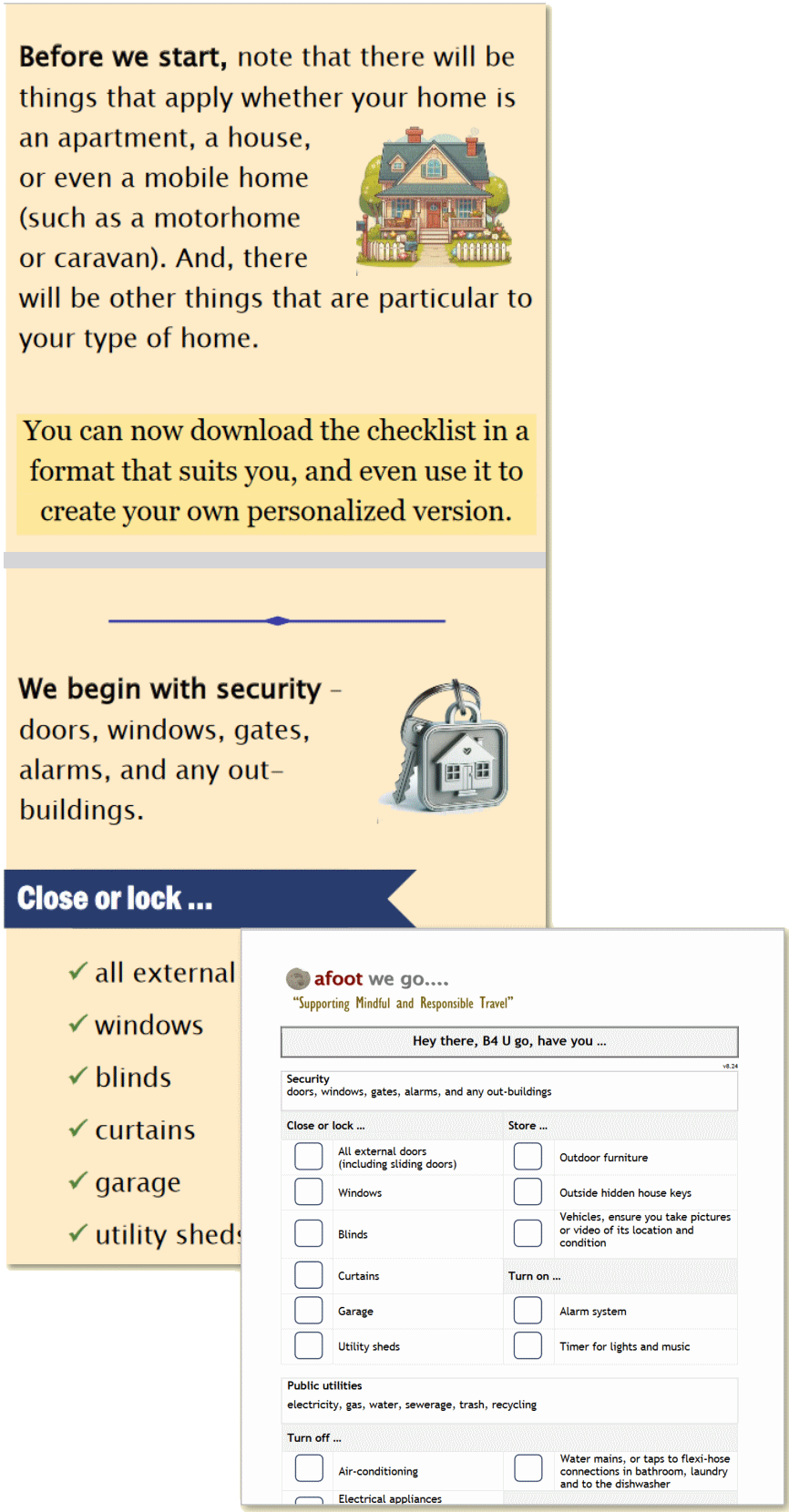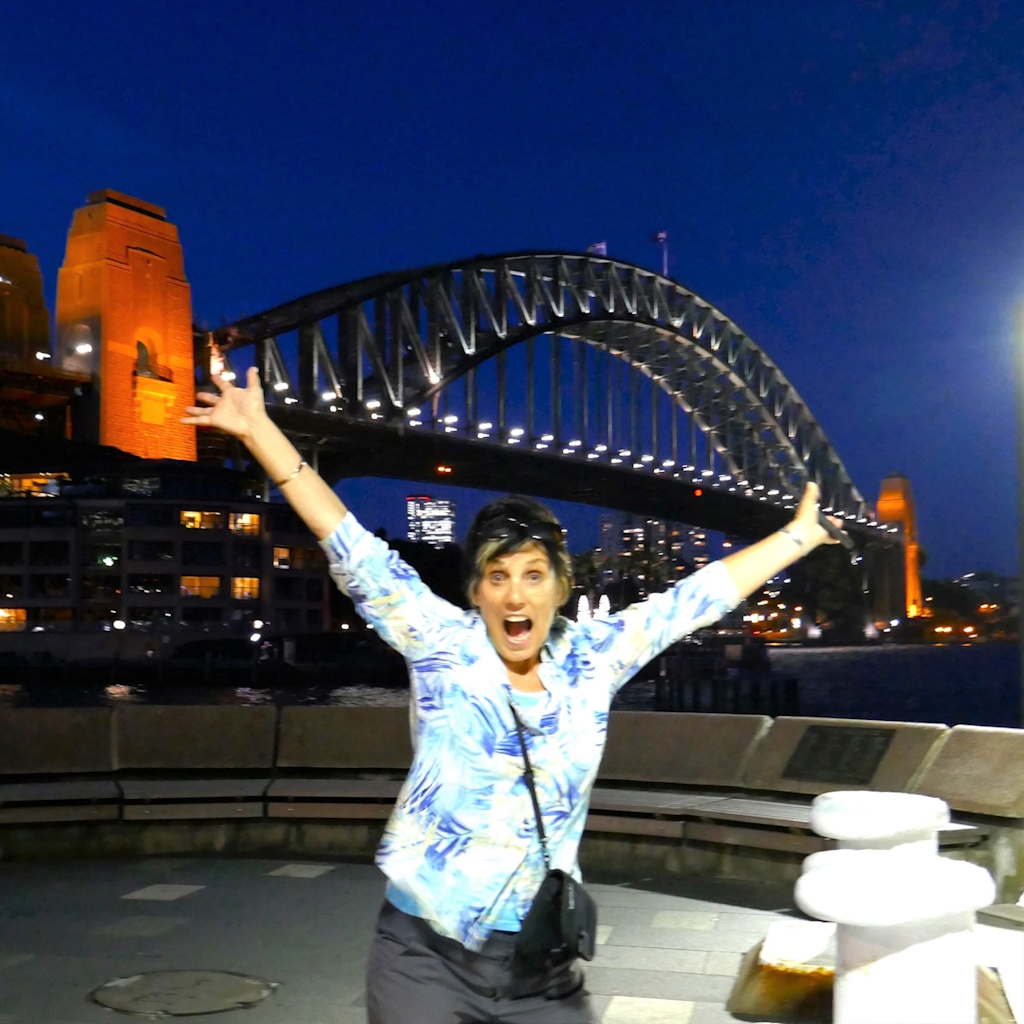afootwego-01-what-you-must-know-before-you-go-to-sydney
afootwego What you MUST know before you go (to Sydney)
…for people who love to walk…
Supporting Mindful and Responsible Travel
The afootwego What You MUST Know before You go to Sydney Page provides essential information about Sydney for travelers.

Sydney: What You MUST Know Before You Go Updated Nov 2025
Mar 2024
13⅓
If you are intending to go to Sydney, and especially if you are an international traveler, there are a number of things to know that can make the difference between a really great experience, and a potential disaster.
Below I have outlined 11 ‘
Note:
This is basically a very abridged version of my piece: Your Very Comprehensive FAQ for Sydney, which offers detailed answers for (+)50 Frequently Asked Questions.
List of ‘MUST Knows’ for Sydney
In this Post, we shall explore:
- Visas for International Travellers
- Australian Border Bio-Security
- Laws for Alcohol, Driving, Smoking
- Road Safety in Australia
- Travel Insurance – Ambulance Cover
- Beach Safety – Coastal & Harbour beaches
- Sydney’s Weather can be a Lottery
- Parts of Sydney are Hilly
- Sydney can be Expensive
- Emergency Numbers
- The Trees that……can kill you
- Public Transport uses Contactless Credit Cards

1. Visas for International Travellers
Australia does not offer Visas on arrival, except for New Zealanders. Unless you carry a New Zealand passport, you must obtain a Visa or travel permit, before arriving at the Australian border.
An Australian Visa can be obtained online. Depending on your passport, you can obtain a Visa using either the Electronic Travel Authority (ETA,) or the eVisitor Visa site.
To explore your Visa options, checkout:
To obtain a 3-month Australian Visa online:
Note that Australian Border Force officials have authority to cancel a Visa during the immigration process if they consider false information has been provided. When this happens, people may also be prevented from returning to Australia for three years.
2. Australian Border Bio-Security
The Australia Border Force treats both Australian citizens, and visitors, exactly the same.
Be aware that Australia has very strict laws regarding bio-security, illicit drugs, and prohibited medicines (such as sedatives). On-the-spot fines can be issued for carrying non-importable food stuffs.
Be wise, research Australian immigration laws, including bio-security, before arriving:
Also, be aware that across Australia, to prevent the spread of pests and diseases, the States have their own quarantine rules, including specific bio-security zones.
Full details are available in the downloadable PDF file:-
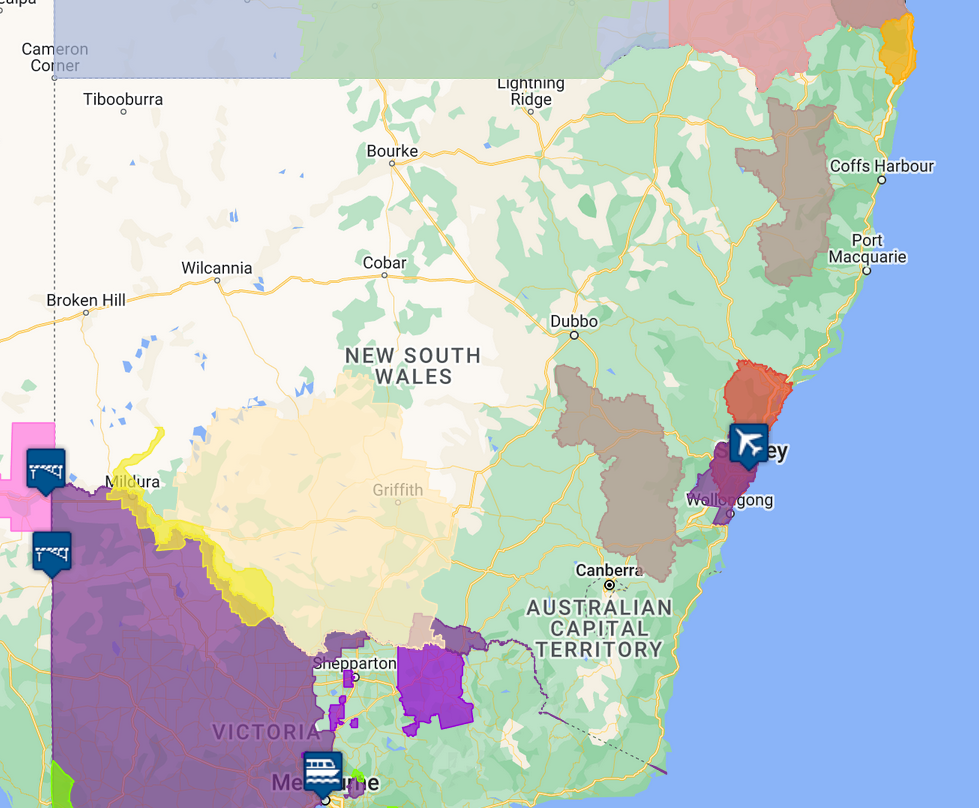
The Interstate Quarantine map (extract shown above) has interactive coloured overlays showing various quarantine areas across Australia. When overlays are tapped, a pop-up provides an explanation of the quarantine area or zone.
Note:
On a mobile device, use the state names below the map to position the map view on your screen:
3. Laws for Alcohol, Driving, Smoking
Outdoor Alcohol Restrictions
For all visitors to Sydney, it pays to be aware of the City’s Outdoor Alcohol Restrictions. As a rule, public roads and footpaths are alcohol-free zones, and parks and covered spaces are alcohol-prohibited. These apply 24/7, while other restrictions are short-term, for an event, such as New Year’s Eve. For further details, checkout the following City of Sydney web pages:
This page also links to a map showing:
Driving
In NSW, you are allowed to drive vehicles covered by your overseas licence, while you remain a temporary overseas visitor.
If your licence is not written in English, you must also carry an English translation, or an International Driving Permit.
For more information about overseas licences, checkout:
Wearing seat belts while driving is compulsory; this applies to both front and rear seated vehicle occupants. Child restraints are also compulsory for children, up to age seven.
Drink driving – you’re breaking the law if you drive and your blood alcohol concentration (BAC) is equal to or more than 0.05. If you’re on a learner’s or provisional licence, your BAC must be zero.
Driving while using a handheld mobile phone, or any other device with a visual display, except for a GPS, is illegal. A GPS unit must be either an integrated part of the vehicle design, or if it is a separate device, be secured in a commercially designed holder.
See Also: 4. Road Safety in Australia
Smoke-free Laws
The NSW State Government has enacted Smoke-free laws to protect people from harmful second-hand tobacco smoke. These also include using e-cigarettes, and apply in both enclosed and outdoor public areas.
For further details, checkout this NSW Health web page:
Residents of apartment buildings are affected by laws covering smoking nuisance, including smoke drift from balconies. This law also applies to smoke from barbeques, etc.
Be aware that the City of Sydney has penalties in place for people who discard cigarettes or butts in the streets, or waterways. In the case of an unlit or extinguished, a fine of $80 apples. If it is still alight, the fine is $200.

4. Road Safety in Australia
If you are an international visitor to Australia, perhaps the most important safety challenge that you face is the direction of traffic flow.
Except for one-way streets, all oncoming traffic always comes from the RIGHT, because Australians drive on the left side of the road. Before crossing the road, anywhere, always look in BOTH directions. Remembering to do this could save your life!
5. Travel Insurance – Ambulance Cover
Travel insurance (or private health fund cover) for overseas visitors is a must, as a trip by an ambulance to the nearest hospital is not cheap!
Website link:
Ambulance coverage for non NSW residnts :
Interstate and overseas residents FAQ:

6. Beach Safety – Coastal & Harbour beaches
As ocean beaches, both Manly and Bondi will have rip-currents, which are caused by a strong flow of water, running from the beach, as it returns to the ocean. If you do intend to take to the water, be sure to look for the beach safety flags (red on yellow combination) that mark the supervised area for swimmers.
While the highly toxic Box Jellyfish is not found around Sydney, one unpleasant visitor to ocean beaches during the summer is the Bluebottle jellyfish. Also known as the Pacific Man-of-War, Bluebottles are more common on ocean beaches, where they are often washed ashore by strong north-easterly winds.
For swimmers, a number of Sydney Harbour’s beaches to the east (i.e. Opera House side) of the Harbour Bridge are protected with shark nets. It is known the harbour is visited by Bull Sharks, particularly during summer and autumn. Shark nets are also installed between 1 September and 30 April at most of Sydney’s coastal beaches, including Manly and Bondi, during the (shark) ‘meshing season’.
Following periods of high rainfall, both Sydney Harbour, and many coastal beaches, become polluted from stormwater run-off. Public warnings are usually issued, advising people to avoid swimming at beaches. The daily status of Sydney’s beaches can be checked at:
Because of historical industrial pollution, much of the upper harbour, west of the Harbour Bridge, is considered unsafe for fishing, shellfish gathering, or swimming. Except for a small area near the harbour entrance, all harbour sediments exceed guidelines for at least one contaminant. The most polluted sediments are found in Homebush Bay, Hen & Chicken Bay, Iron Cove, Rozelle Bay, Blackwattle Bay and Long Bay. The worst contaminants are dioxins, heavy metals (e.g. arsenic, lead and mercury), and pesticides (e.g. DDT).
A guide to fishing in Sydney Harbour is available at:

[See Special Note (below):
Note: This is the “old” BoM Site, with a strong colour scheme for rain intensity – in October 2025 this was replaced with a site using a different set of colours, causing alarm and confusion for site users
7. Sydney’s Weather can be a Lottery
The Sydney region has its own microclimate. This means the weather can be both variable across the region, and also quite changeable, even on the same day.
Features which can bring extreme weather to Sydney include Antarctic cold air masses from the Southern Ocean, desert-warmed air masses from central Australia, ex-tropical cyclone remnants, and the infamous ‘East Coast Lows’.
On average, Sydney’s winters are sunnier than its summers. In downtown Sydney, temperatures can change from the low 20’s to high 30’s, or from wet and cool, sometimes humid, to hot and dry, within a matter of days.
Sydney can have a lot of rain, but it has no pronounced dry season. So, don’t forget to pack an umbrella, or even a lightweight poncho, especially if you intend to be outdoors.
During summer, Australia’s UV level is higher than the northern hemisphere. Apparently, this is due to the Earth’s elliptical orbit, which brings Australia closer to the sun, resulting in an additional 7% solar UV intensity. Australia also has clearer atmospheric conditions, which means we can be exposed to up to 15% more UV than our northern cousins.
Sunburn and dehydration are summertime hazards, especially in the outdoors. Protect yourself with water-resistant, reef-friendly sunscreen (SPF30 or higher), and by regularly drinking small amounts of water. Ensure you have suitable clothing, such as loose-fitting tops and pants, with long sleeves and legs, plus a wide-brimmed hat to protect your face, ears, and the back of your neck. Other preventative measures include eating fruits and vegetables that have a high water content, and where possible, finding shade to sit in.
Useful links for current and forecasted weather information include:
Note :
Parts of the BoM site are not (yet ?) designed for viewing on mobile devices.
This Page offers 1-Hourly Forecasts
showing Sydney coastal view, with options for rainfall, wind, waves, temperature, storms, humidity, and UV
use the Search field to find Sydney, NSW
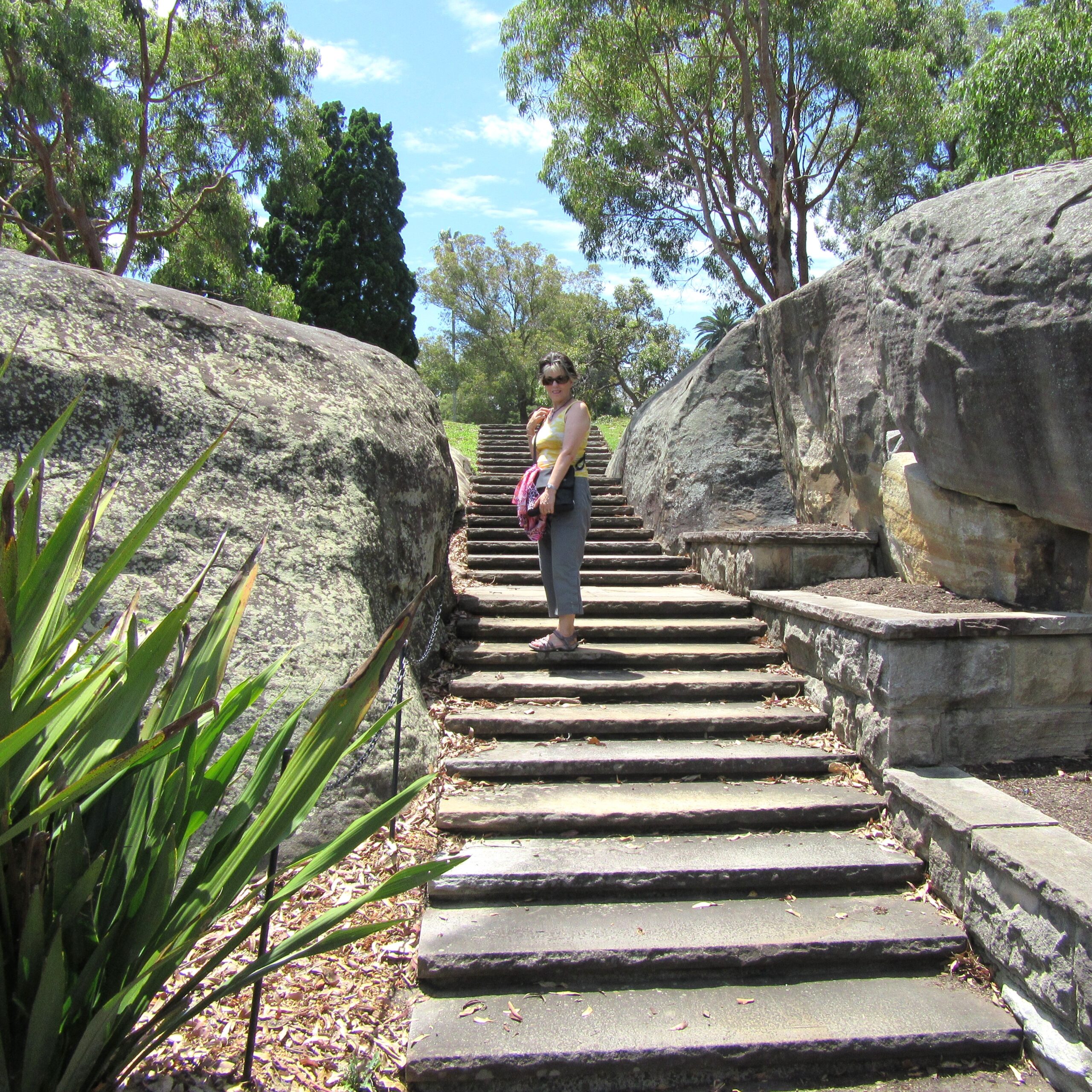
8. Parts of Sydney are Hilly
Be aware that parts of Sydney are quite hilly!
So, be careful where you decide to stay, as some suburbs have steep, narrow and windy roads.
One of the most popular tourist areas, The Rocks district, is set on a steep, rocky headland. Here, there are a number of stairs to be negotiated, both ascending and descending.
There are also parts of Sydney’s city area that are relatively flat, or have a much more gentle gradient, such as George Street, one of the main shopping precincts.
Sydney has a great public transport system, with trains, trams, buses, and ferries. Sydney Metro is a fully accessible railway, with all train terminals equipped with elevators.
9. Sydney can be Expensive
Sydney is rated as the most expensive city in Australia. In comparison to my hometown of Melbourne (Australia), I found the cost of items such as food, and entertainment, to be slightly dearer in Sydney.
Car parking in Sydney is also very costly. Apparently, on a global scale, Sydney ranks particularly highly in this regard.
Budget Research
To research basic costs in Sydney for food, transport, entertainment, etc., I use Expatistan:
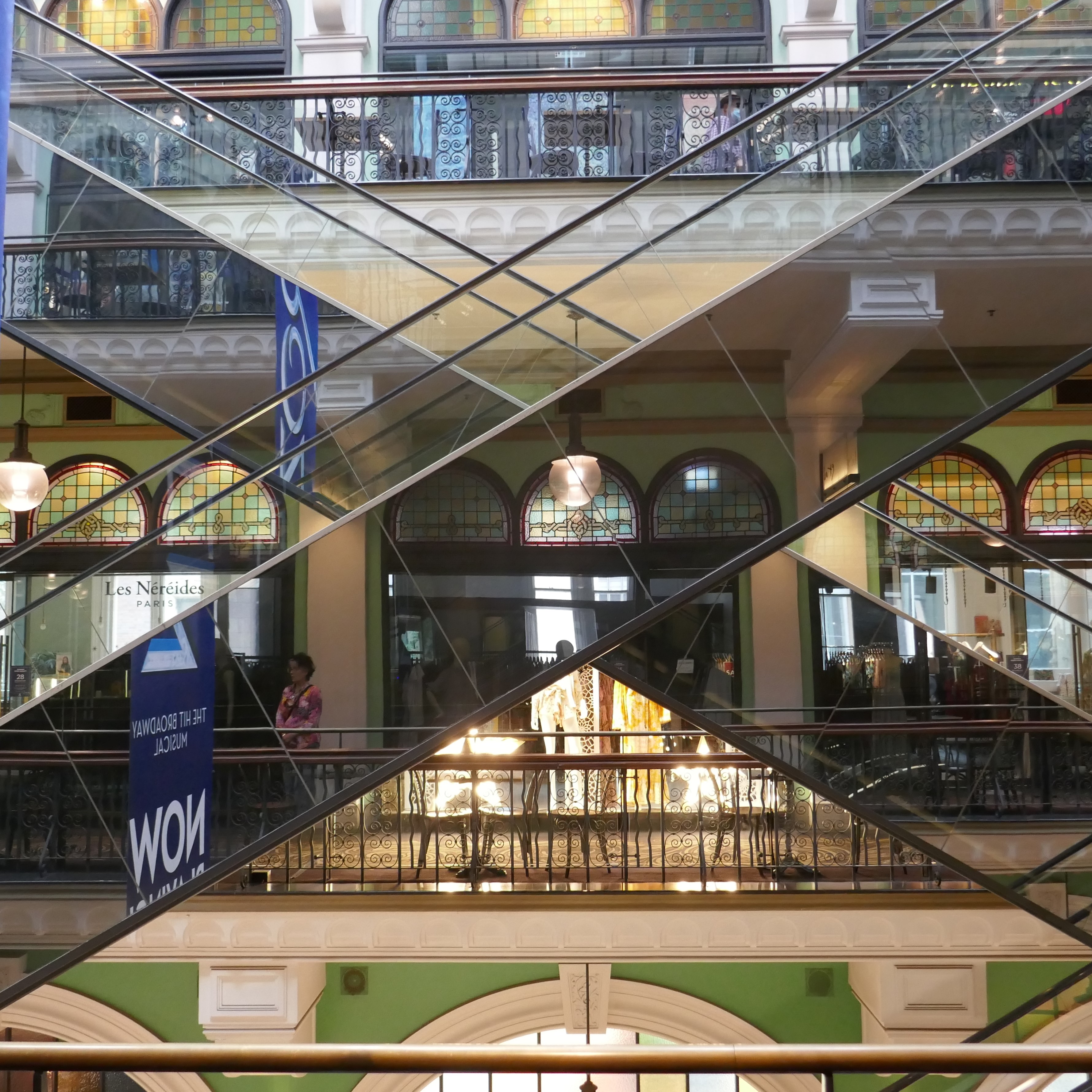
The Expatistan Cost of Living website also allows us to make a direct a city-to-city comparison of costs for any chosen cities:
10. Emergency Numbers
The emergency services number for Ambulance, Police, Fire and Search and Rescue across all Australian States and Territories
This is the international standard emergency number.
If you are a TTY user, 106 is the world’s first national text-based emergency service, providing access to fire, police and ambulance services.
Police assistance for non-urgent issues
Emergency roadside assistance service, operated across New South Wales by NRMA (formerly National Roads and Motorists’ Association)
Please note that there may be a ‘On Road Join & Go fee’ for immediate access to roadside assistance services
Poisons Information Centre
If someone has been bitten or stung by a snake, spider, bee, wasp or other poisonous creature, this help line is available 24/7
Country Code for Australia:
Dialling code for Sydney
11. The Trees that…..can kill you!
Australia is the land of the Eucalypts, commonly known as ‘gum trees’. The Eucalypt species (Eucalypts include Angophora, Corymbia and Eucalyptus trees) make up around 75% of Australia’s native forest area.
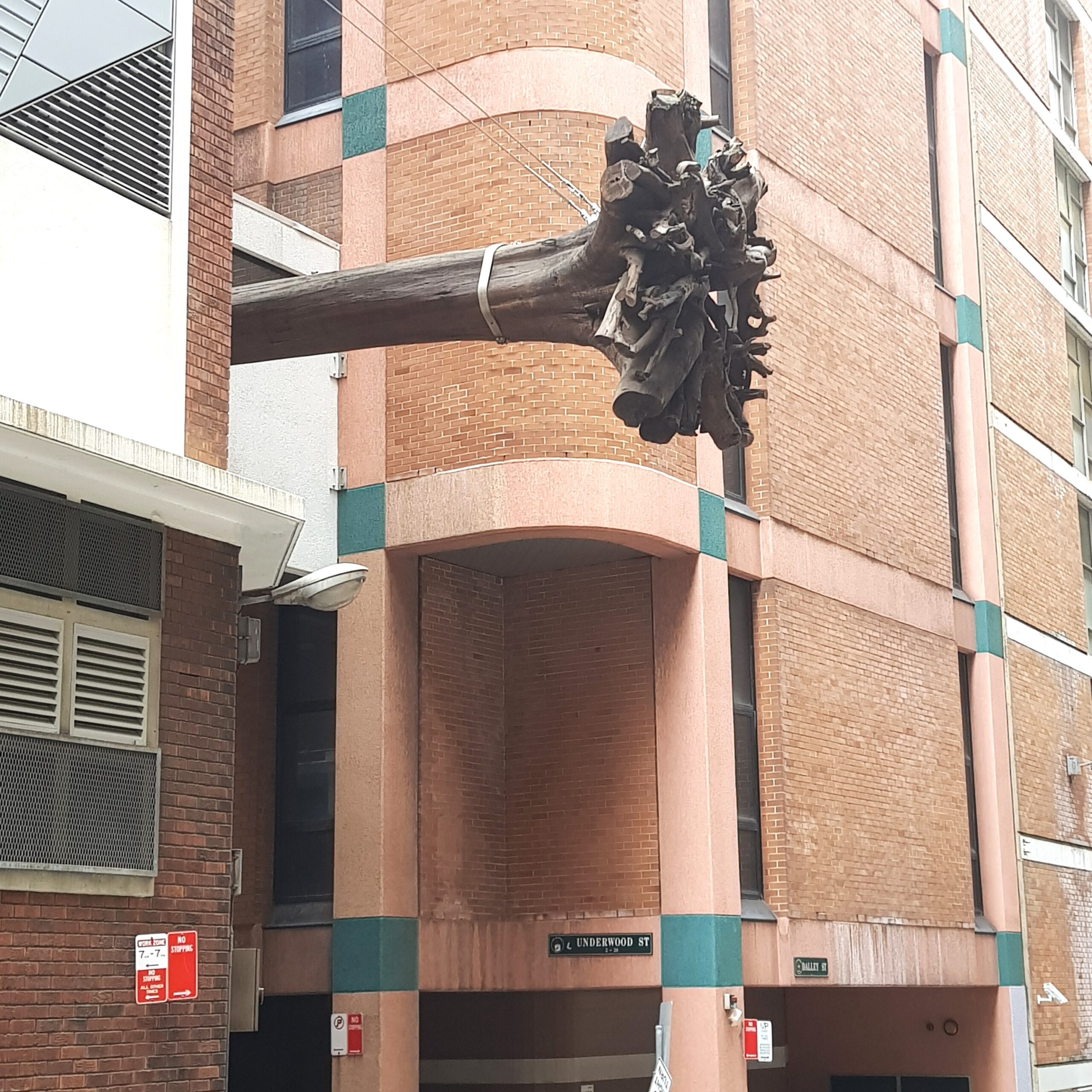
Amongst the giants of the forest, many of the bigger Eucalypts of Victoria and Tasmania can reach about 90 metres (or 300 feet) in height, with a circumference of 7.5 metres (or 24.5 feet). ‘Centurion’, in Tasmania’s Arve Valley, stands at 100.5 metres.
Several of Australia’a Eucalypts have acquired a fearsome reputation as ‘widow-makers’. This comes from the tendency of apparently healthy trees to shed a large branch. This happens totally without any warning, except for a sound of cracking, as the branch breaks free!
Some arborists describe this as ‘self-pruning’. Usually, it is the older trees that drop branches, meaning the fall may be of 20 or more metres. The branches are very dense, because of their high resin content, making for a serious impact.
Often, the shed branch is growing laterally, out from the main trunk, rather than upwards. While some dropped branches show signs of disease, this is not always so. The only warning sign for a tree may be a scar from an earlier dropped branch, or a branch lying nearby on the ground.
As dropped branches are more common in summer, particularly during dry, windy spells, arborists consider this is about self-preservation, allowing the tree to conserve water. That said, there are often no signs of an impending branch drop.
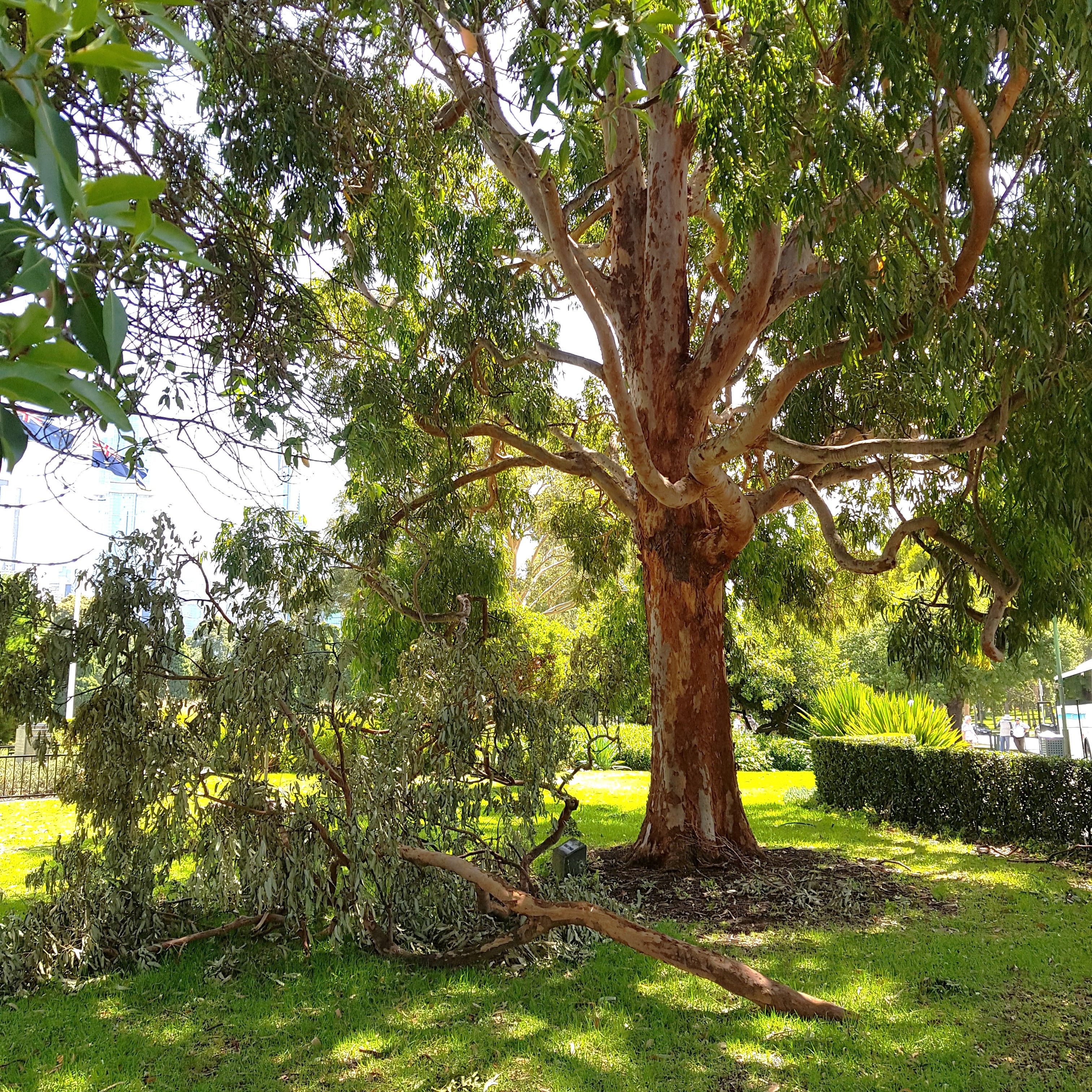
The best arborist advice is: “don’t sit (or camp) under the branches of older eucalypts, especially in summer.”
12. Public Transport uses Contactless Credit Cards
Perhaps not a ‘Must’ know, but this is more than just a ‘Nice to know’.
In late 2019, Transport for NSW rolled out the use of contactless credit card payments to pay for trips on public transport in Sydney and surrounds. This means that visitors no longer need an Opal card.
Cards with contactless technology display the Wave (wifi) symbol on the front of the card.
Using a contactless credit card receives the same travel benefits and rewards as an Adult Opal card, i.e. daily and weekly cost caps are applied to all forms of Public Transport; daily cost caps also apply to travel on weekends and Public Holidays.
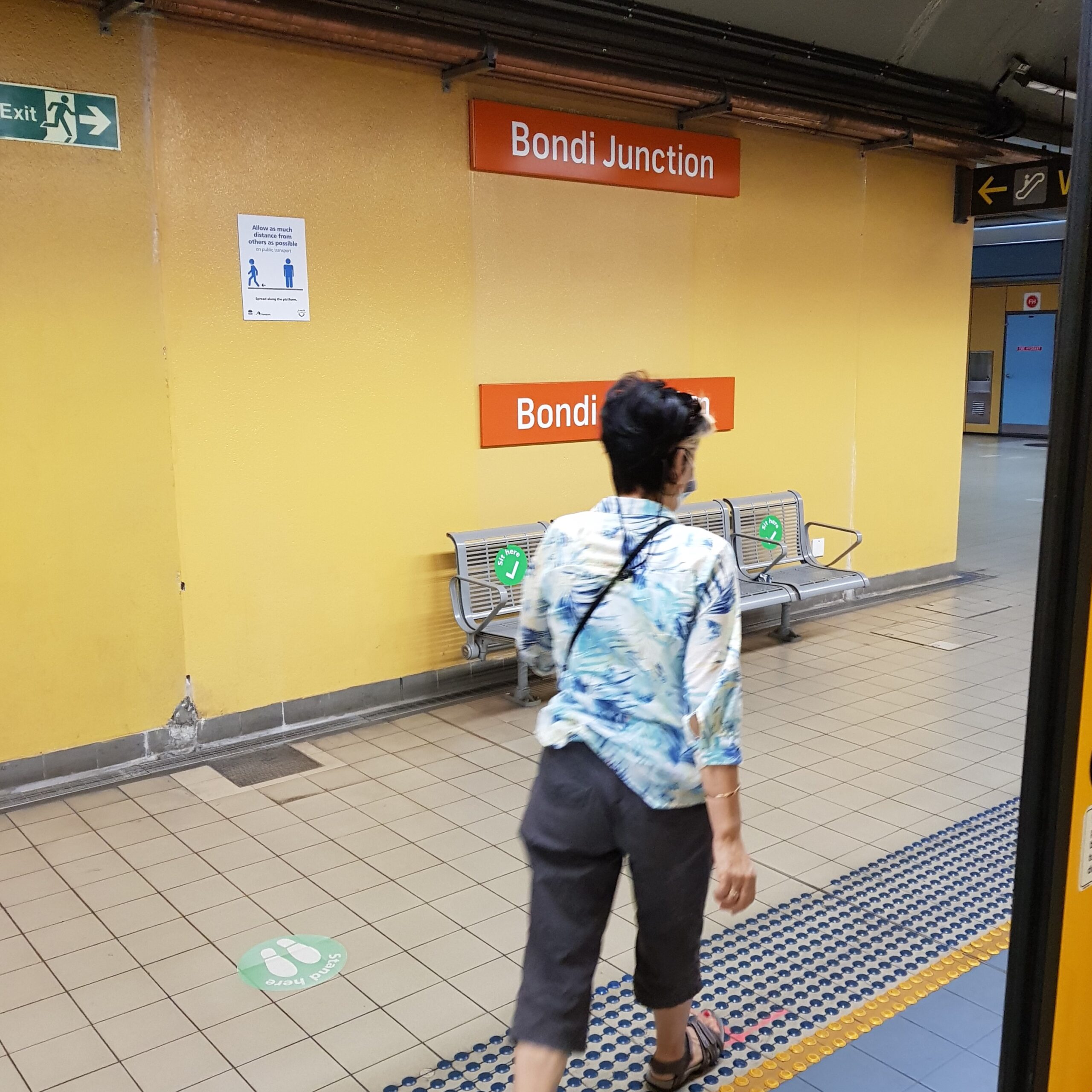
The Transport for NSW Trip Planner is available at:
Your Feedback, please…
Firstly, my thanks to you, for reading my post.
Now, the really BIG question is:
“What value has this Post offered you? “
Has it helped you, or do you need more information?
If you wish to offer some feedback, or to read the feedback from others, please follow the link below to the Feedback Page:
Why Your Feedback is Important to Me
In real life, I am an agile Change Manager, so I know that feedback is an essential part of the improvement process.
Your feedback can help me improve both the content of this Post, and also of future Posts.
If you have a thought, or a question, about the post content, or if you would like to provide feedback about something else, please follow the link to the Feedback Page.
I do look forward to hearing from you, especially if we can make improvements that will help fellow travelers on the road.
Marlene
Please note, before any feedback is posted, it will be moderated. When I am moderating, I may need to contact you, which is why I ask for your email address.
Your email address will
Here is a link to the my afootwego.com CONDITIONS for POST FEEDBACK (2½ mins to read).
Should you wish to peruse them, here are links to my afootwego.com PRIVACY POLICY and Website TERMS and CONDITIONS of USE.
- NOTE:
- This site is specifically designed for responsive display on a mobile device
On devices with wider screens, it will appear as a single, center-aligned column

